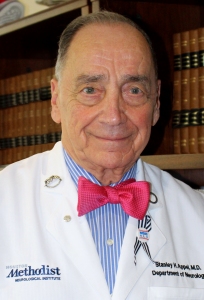In need of an extra dose of inspiration? You might read a great book or listen to that podcast your friend recommended. You might even take a stroll along the beach. But I can do you one better: go to a conference poster session where young stem cell scientists describe their research.
That’s what I did last week at the City College of San Francisco’s (CCSF) Bioscience Symposium held at UC San Francisco’s Genentech Hall. It’s a day-long conference that showcases the work of CCSF Bioscience interns and gives them a chance to present the results of their research projects, network with their peers and researchers, hear panelists talk about careers in biotechnology and participate in practice job interviews.

CCSF’s CIRM Bridges Scholars (clockwise from top left): Vanessa Lynn Herrara, Viktoriia Volobuieva, Christopher Nosworthy and Sofiana E. Hamama.

CCSF’s CIRM Bridges Scholars (clockwise from top left): Seema Niddapu, Mark Koontz, Karolina Kaminska and Iris Avellano
Eight of the dozens of students in attendance at the Symposium are part of the CIRM-funded Bridges Stem Cell Internship program at CCSF. It’s one of 14 CIRM Bridges programs throughout the state that provides paid stem cell research internships to students at universities and colleges that don’t have major stem cell research programs. Each Bridges internship includes thorough hands-on training and education in stem cell research, and direct patient engagement and outreach activities that engage California’s diverse communities.
In the CCSF Bridges Program, directed by Dr. Carin Zimmerman, the students do a 9-month paid internship in top notch labs at UCSF, the Gladstone Institutes and Blood System Research Institute. As I walked from poster to poster and chatted with each Bridges scholar, their excitement and enthusiasm for carrying out stem cell research was plain to see. It left me with the feeling that the future of stem cell research is in good hands and, as I walked into the CIRM office the next day, I felt re-energized to tackle the Agency’s mission to accelerate stem cell treatment for patients with unmet medical needs. But don’t take my word for it, listen to the enthusiastic perspectives of Bridges scholars Mark Koontz and Iris Avellano in this short video.
 NAFLD refers to a broad range of liver conditions, which are all characterized by abnormally high levels of fat deposits in the livers of people who do not drink excessive amounts of alcohol. While not always fatal, NAFLD can lead to liver cirrhosis, or extensive scaring of the liver tissue. Cirrhosis, in turn, can cause life-threatening conditions such as liver cancer or liver failure. Whether or not N
NAFLD refers to a broad range of liver conditions, which are all characterized by abnormally high levels of fat deposits in the livers of people who do not drink excessive amounts of alcohol. While not always fatal, NAFLD can lead to liver cirrhosis, or extensive scaring of the liver tissue. Cirrhosis, in turn, can cause life-threatening conditions such as liver cancer or liver failure. Whether or not N
![AskExpertsMAY2018[1]](https://aholdencirm.files.wordpress.com/2018/05/askexpertsmay20181.png?w=676)








 Triple negative breast cancer is more aggressive and difficult to treat than other forms of the disease and, as a result, is more likely to spread throughout the body and to recur after treatment. Now a team at the University of Southern California have identified a protein that could help change that.
Triple negative breast cancer is more aggressive and difficult to treat than other forms of the disease and, as a result, is more likely to spread throughout the body and to recur after treatment. Now a team at the University of Southern California have identified a protein that could help change that. In a
In a 

